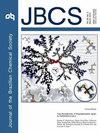Reversed-Phase Liquid Chromatography Methods Based on C18 Polymer Monoliths for the Determination of Urinary Myoglobin
IF 1.3
4区 化学
Q3 CHEMISTRY, MULTIDISCIPLINARY
引用次数: 0
Abstract
This study describes reversed-phase liquid chromatography (RPLC) methods to quantify urinary myoglobin using polymer monolithic columns produced by copolymerization of stearyl methacrylate (SMA) and ethylene glycol dimethacrylate (EDMA). The columns were prepared in the coffins of 1.5 mm internal diameter (i.d.) ethylene tetrafluoroethylene (ETFE) tubing for use in sequential injection chromatography (SIC) and solid phase extraction (SPE), and inside 1.0 mm i.d. Silcosteel ® tube for use in narrow-bore liquid chromatography. The monoliths inside the ETFE were produced via UV, whereas thermal polymerization formed the monoliths inside the Silcosteel ® tube. The separation of carbonic anhydrase, lysozyme, and myoglobin was demonstrated because they may occur simultaneously in urine samples. Quantification was undertaken by external calibration, and the accuracy was evaluated by the spiking/recovery strategy. The methods exhibited linearity from 5.0 to 60 µ g mL -1 (SIC), 2.5 to 50 µ g mL -1 (high-performance liquid chromatography (HPLC)), and 1.0 to 7.5 µ g mL -1 for an SPE-HPLC method. The lowest limits of detection and quantification were 0.13 and 0.43 µg L -1 , respectively, obtained after concentrating myoglobin by SPE. Recoveries ranged from 98 to 105%. The low cost, simplicity, reusability, and analytical features provided by these polymeric stationary phases make them affordable alternatives to routine analyses of urinary myoglobin.基于 C18 聚合物单片的反相液相色谱法测定尿肌红蛋白
本研究介绍了使用由甲基丙烯酸硬脂酯(SMA)和乙二醇二甲基丙烯酸酯(EDMA)共聚而成的聚合物整体柱定量检测尿肌红蛋白的反相液相色谱(RPLC)方法。这些色谱柱是在内径为 1.5 毫米的乙烯-四氟乙烯(ETFE)管(用于顺序进样色谱法(SIC)和固相萃取(SPE))和内径为 1.0 毫米的 Silcosteel ® 管(用于窄孔液相色谱法)的容器中制备的。ETFE 内的单体是通过紫外线产生的,而 Silcosteel ® 管内的单体则是通过热聚合形成的。由于碳酸酐酶、溶菌酶和肌红蛋白可能同时存在于尿液样本中,因此对它们的分离进行了演示。定量是通过外部校准进行的,准确度则是通过加标/回收策略进行评估的。这些方法的线性范围分别为 5.0 至 60 µ g mL -1 (SIC)、2.5 至 50 µ g mL -1 (高效液相色谱法)和 1.0 至 7.5 µ g mL -1 (SPE-高效液相色谱法)。采用 SPE 法浓缩肌红蛋白后,最低检测限和定量限分别为 0.13 和 0.43 µg L -1 。回收率为 98% 至 105%。这些聚合固定相成本低、操作简单、可重复使用且具有分析功能,是尿肌红蛋白常规分析的经济型替代品。
本文章由计算机程序翻译,如有差异,请以英文原文为准。
求助全文
约1分钟内获得全文
求助全文
来源期刊
CiteScore
2.90
自引率
7.10%
发文量
99
审稿时长
3.4 months
期刊介绍:
The Journal of the Brazilian Chemical Society embraces all aspects of chemistry except education, philosophy and history of chemistry. It is a medium for reporting selected original and significant contributions to new chemical knowledge.

 求助内容:
求助内容: 应助结果提醒方式:
应助结果提醒方式:


